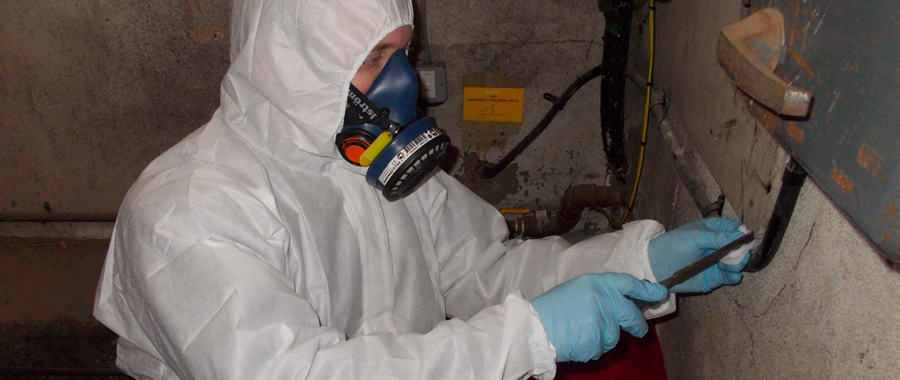No Time to Lose in Managing Asbestos
With the HSE estimating that at least 5,000 people die every year from an asbestos-related cancer caused by exposure to asbestos fibres at work, raising awareness about asbestos exposure is still – if not more - as important now as ever before.
In the latest ORR occupational health programme update, the ORR backed IOSH’s No Time to Lose (NTTL) campaign.
IOSH’s campaign aims to encourage organisations to:
- better understand the risks
- demonstrate good practice
- commit to introducing new policies and practices to manage the risks associated with carcinogens at work.
With this in mind, there were a number of key messages raised in the ORR’s health programme update to help rail and road users. Our asbestos technical manager, Denis Morgan, has provided further guidance to help your understanding of how best to manage asbestos. There really is no time to lose.
Do you include protective measures for occupational cancer risks, including asbestos, in your annual report or other public reporting?
It is a legal requirement under the Control of Asbestos Regulations 2012 to manage asbestos; the duty to manage lies with the owner, occupier or manager of a non-domestic property who has the responsibility for maintenance, repairs and access to/from the property.
Ensuring asbestos compliance is maintained can include tasks such as, coordinating the regular re-inspection of asbestos materials, managing the delivery of training courses across the business, updating policy and procedures, liaison with asbestos consultants and removal organisations, and auditing internal and external processes.
All activities should be recorded in an asbestos management plan and duty holders should take measures to ensure they comply with the Control of Asbestos Regulations 2012.
Do your operational managers understand the potential risks associated with disturbance of ACMs during property and infrastructure maintenance, and manage them proactively?
Asbestos containing materials (ACMs) have the potential to release asbestos fibres into the atmosphere, if disturbed. If asbestos is present, in poor condition and not managed effectively, others in the proximity may be put at risk of asbestos exposure and associated ill health.
When it comes to asbestos, roofing and insulation materials tend to be the first things that come to mind. However, not everyone is so aware of the other common materials that may contain asbestos.
Discovering unexpected ACMs requires immediate action; stop what you are doing and clear the area. Keep materials and equipment where they were, so as not to spread any asbestos fibres. Close or seal the area, if possible. Warning signs should be put up and a specialist should be called to support in cleaning up the area. This incident would also need reporting to your employer.
Do you know the type, location and condition of any asbestos containing materials (ACMs) across your infrastructure (this should be in the ‘asbestos register’)?
Although an asbestos survey is not a legal requirement, all commercial buildings in the UK should have a record of known or presumed asbestos containing materials, along with a plan for how those materials are to be managed.
Regulation 4 'The Duty to Manage' of the Control of Asbestos Regulations 2012 state the requirements are to:
- Undertake reasonable measures to locate or presume the location of asbestos containing materials
- Prepare a record of the location and condition of the materials
- Assess the risk posed by the materials
- Produce and implement a plan outlining how the risk will be managed
- Periodically update the plan and ensure anyone liable to disturb the materials has access to the relevant information
Does your asbestos management plan make clear how intact ACMs will be protected from damage during maintenance work, and prioritise the removal or repair of any ACMs in poor condition?
If ACMs are in poor condition or likely to be disturbed during maintenance works – or, indeed, by any other activity, remedial actions will need to be considered. One such option would be to remove the materials but it may also be feasible to repair, ‘encapsulate’ or protect the materials to prevent damage and reduce risks.
However, if ACMs are in good condition, managing them in situ may be the safest and easiest option. Knowing the location of ACMs allows you to redesign project activities around this, to mitigate the risk of disturbance. Contractors should also be made aware of the location of ACMs.
Have local managers and workers had adequate training in safe systems of work for any tasks involving ACMs? How do you monitor compliance?
Ensuring duty holders have regular and comprehensive training is key to equipping them with the knowledge and expertise required to maintain the highest standards of asbestos management.
It is also a legal requirement for employers to ensure their employees are suitably trained (as part of Regulation 10 of the Control of Asbestos Regulations 2012) which, depending on the employee’s involvement and exposure level with asbestos, can vary.
Conventional training courses cover a wide range of topics, including the properties of asbestos and its effects on health, the types and uses of the material. With training, employees can be informed on the latest protocols to minimise risk ahead of any building work or demolition. In addition, training courses provide up-to-date guidance on the procedures to be followed in the event of an uncontrolled release of asbestos or a similar emergency.
As asbestos training requirements are dependent on the role and responsibility of the individual employee, individuals who are deliberately working on, or disturbing, ACMs will require Asbestos Awareness training and training for Non-licensable work with asbestos including NNLW.
For more advice or support on managing asbestos, please read our asbestos FAQs or get in touch.






Add new comment